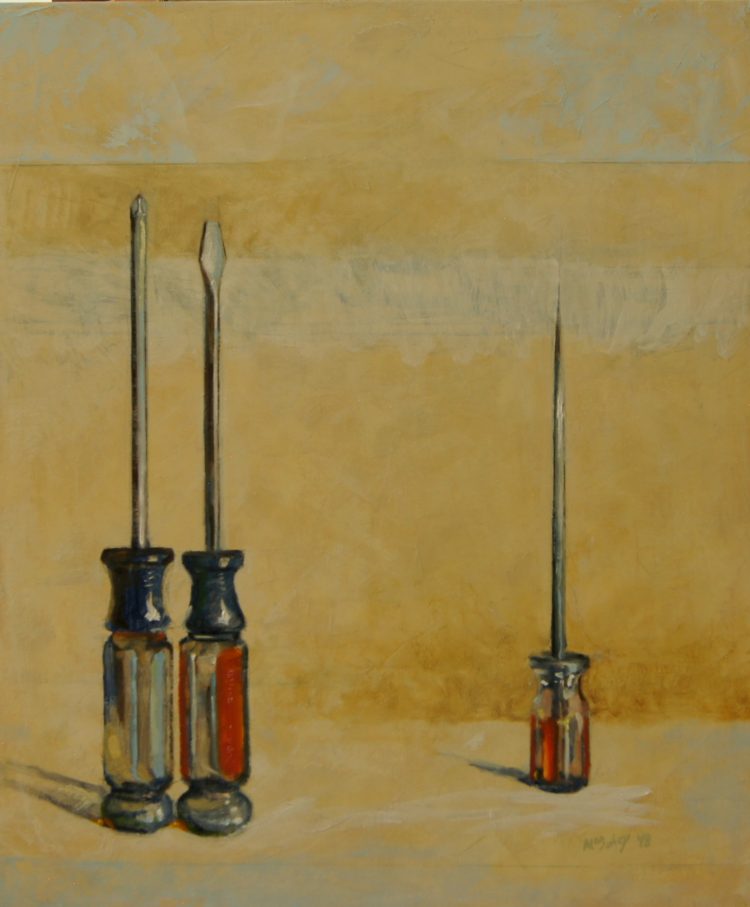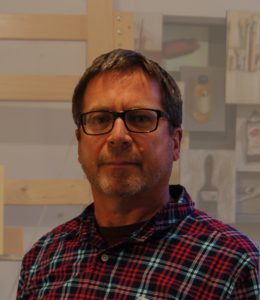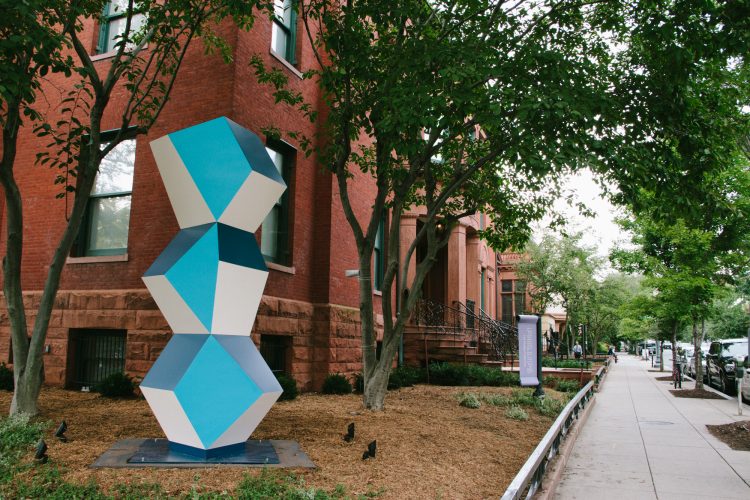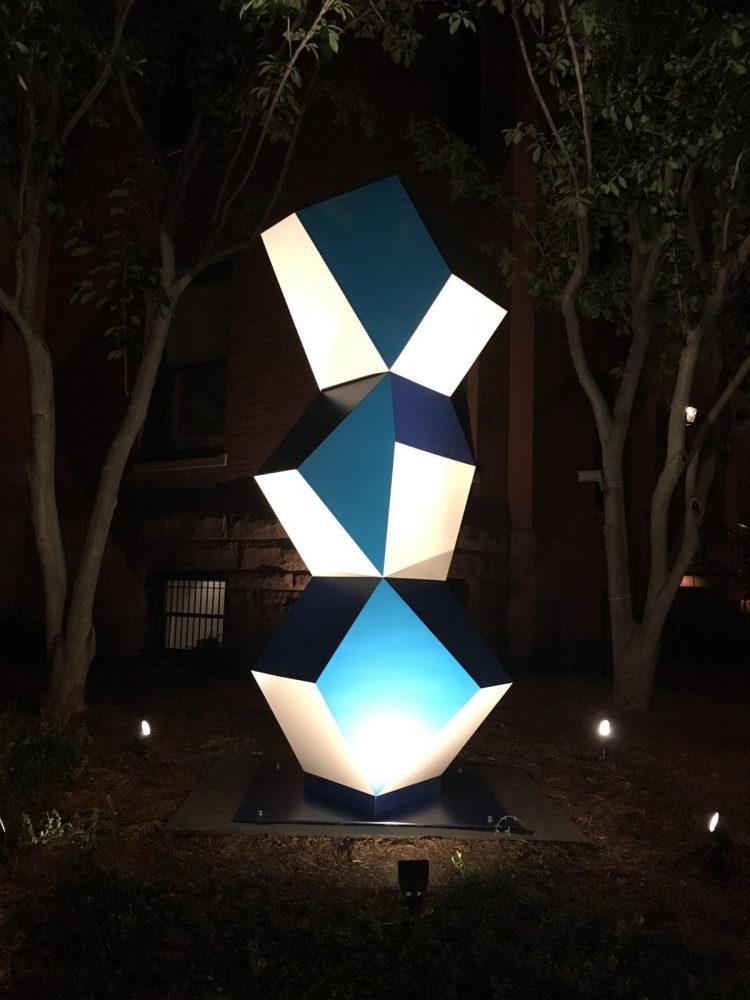In this series, Manager of Visitor and Family Engagement Emily Bray highlights participants in This Is My Day Job: The 2018 James McLaughlin Memorial Staff Show, on view through September 30, 2018.
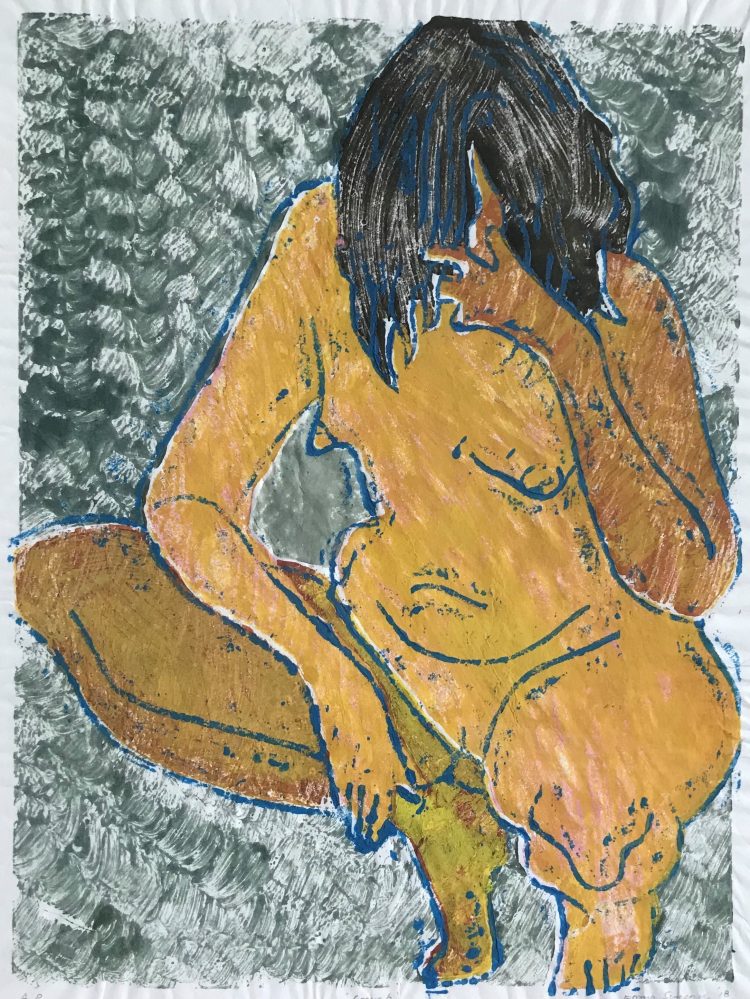
Crouch by Emma Sweeney
What do you do at The Phillips Collection? Are there any unique or interesting parts about your job that most people might not know about?
Museum Assistant. My favorite part of the job is getting one-on-one time with the artworks.

Emma Sweeney
Who is your favorite artist in the collection?
Alexander Calder, Henri de Toulouse-Lautrec, Joan Mitchell, Francisco de Goya
What is your favorite space within The Phillips Collection?
I love the Laib Wax Room and the former main gallery. It’s very secluded and peaceful there.
What would you like people to know about your artwork on view in the 2018 Staff Show (or your work in general)?
My piece for the staff show is a woodblock print which I made using two separately carved blocks. One block was carved using the jigsaw method, in which the block is cut up into different pieces that can then be inked separately and put back together like a jigsaw puzzle, allowing me to print multiple colors from one block. Apparently this was one of Edvard Munch’s favorite methods of printmaking (Munch is one of my personal printmaking heroes). The second block I carved serves as the “key” block, the central part of the final image (in this case the lines of the figure), which I printed on top of the jigsaw block. What I love best about this process is that it is a combination of printing and painting: I paint the inks onto the jigsaw block, which means I can be totally spontaneous with the color and gesture. Even though I am re-creating the same image each time, each print comes out looking radically different (no two are exactly alike). In terms of the image itself, I’ve always been drawn to the female form (for reasons I don’t quite understand), and I particularly like creating visceral, expressive poses.
This Is My Day Job: The James McLaughlin Memorial Staff Show is on view through September 30, 2018.

